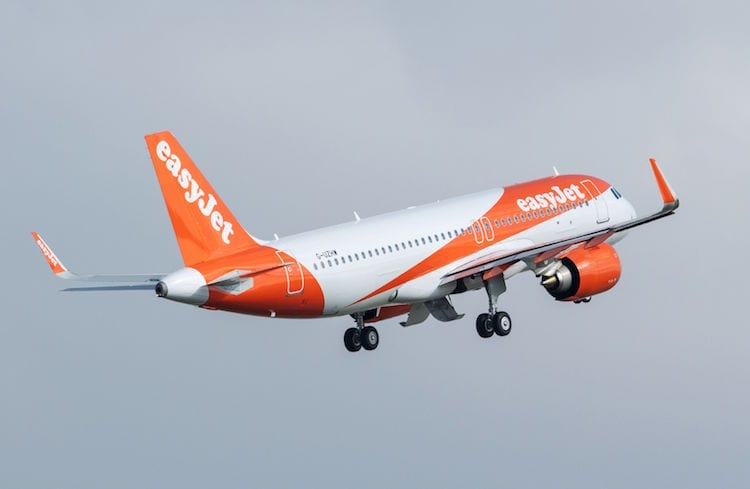
EasyJet’s newest Airbus A320 is equipped with FANS-C avionics. Photo: Airbus
EasyJet is the first European airline that will start operating aircraft equipped with avionics capable of enabling 4D initial trajectory sharing, a future navigation concept proposed to help air navigation service providers cope with increases in air traffic volumes.
Airbus has completed the delivery of the first aircraft capable of flying 4D initial trajectory operations, an A320. It will be the first of 100 A320s equipped with what Airbus describes as “FANS-C” avionics—the combination of automatic dependent surveillance contract (ADS-C) and controller to pilot data link communication (CPDLC) capabilities.
Over the next year, EasyJet will be one of seven airlines receiving FANS-C equipped aircraft from Airbus to participate in the manufacturer’s “Demonstration of air traffic management improvements generated by 4D Initial Trajectory Information Sharing” (DIGITS) project. DIGITS was launched by the Single European Sky ATM Research Joint Undertaking (SESAR JU) to evaluate the ability aircraft and ground-based infrastructure in European airspace to transition to trajectory-based operations in the future.
“Our early hands-on experience already indicates that it promises to be an important enabler to increase the efficiency, safety and on-time performance of our expanding operations – especially in the congested European airspace,” said Hugh McConnellogue, group head of network operations at EasyJet.
Government-industry consortiums in Europe under SESAR JU and the United States under the FAA’s NextGen program have been researching the avionics and air traffic technologies necessary to enable 4D navigation since 2012. Current flight operations are managed by air traffic controllers using three dimensions, including an aircraft’s longitudinal, lateral and vertical path information.
4D adds the fourth element of time, progressively showing the change in an aircraft’s flight path in real time to controllers. The concept will enable airlines to optimize their aircraft’s trajectories and make traffic flows more fluid and aircraft speed easier to manage, according to Airbus.

The air-to-ground elements necessary to enable 4D flight operations. Photo: Airtel ATN
Onboard avionics necessary to enable 4D trajectory operations include new data link routers, upgraded flight management systems and data link compatible cockpit displays. Airbus plans to equip a total of 100 A320s with these FANS-C avionics and deliver them to seven European airlines including: Air France, British Airways, EasyJet, Iberia, Novair, Thomas Cook and Wizz Air.
“We congratulate EasyJet on the delivery of the first FANS-C equipped Airbus aircraft, which marks the start of this very large demonstration of 4D initial trajectory sharing across Europe,” said Jean-Brice Dumont, executive vice president of engineering, Airbus.
Over the next year, Airbus will be working with European ANSPs to collect data from 20,000 revenue flights measuring the performance of the aircraft and air traffic systems necessary to enable initial 4D operations. Air traffic facilities managed by DFS in Germany, ENAV in Italy and NATS in the U.K. will participate in these flight operations. Data link communication infrastructure and software provider Airtel ATN is supplying air to ground data link servers to DFS, ENAV and NATS for the flights, which will conclude in late 2020.